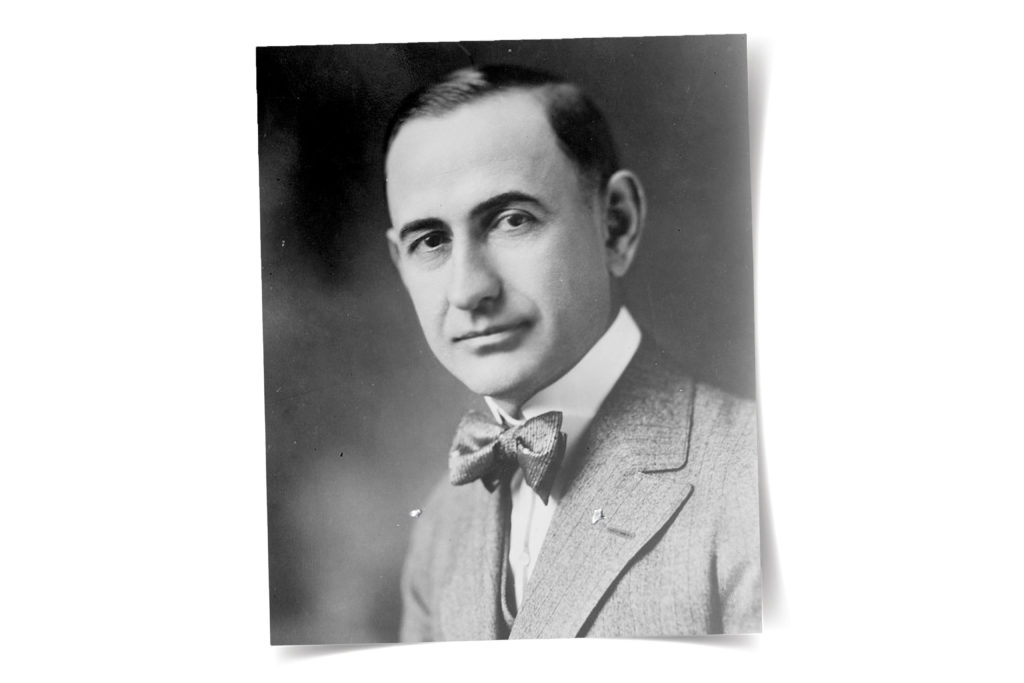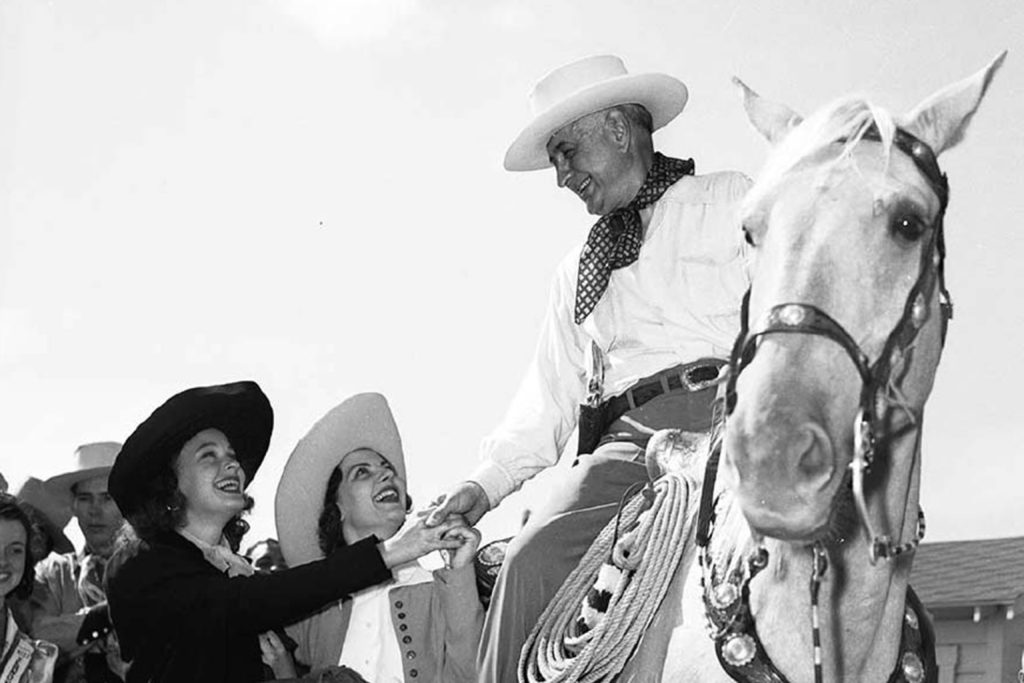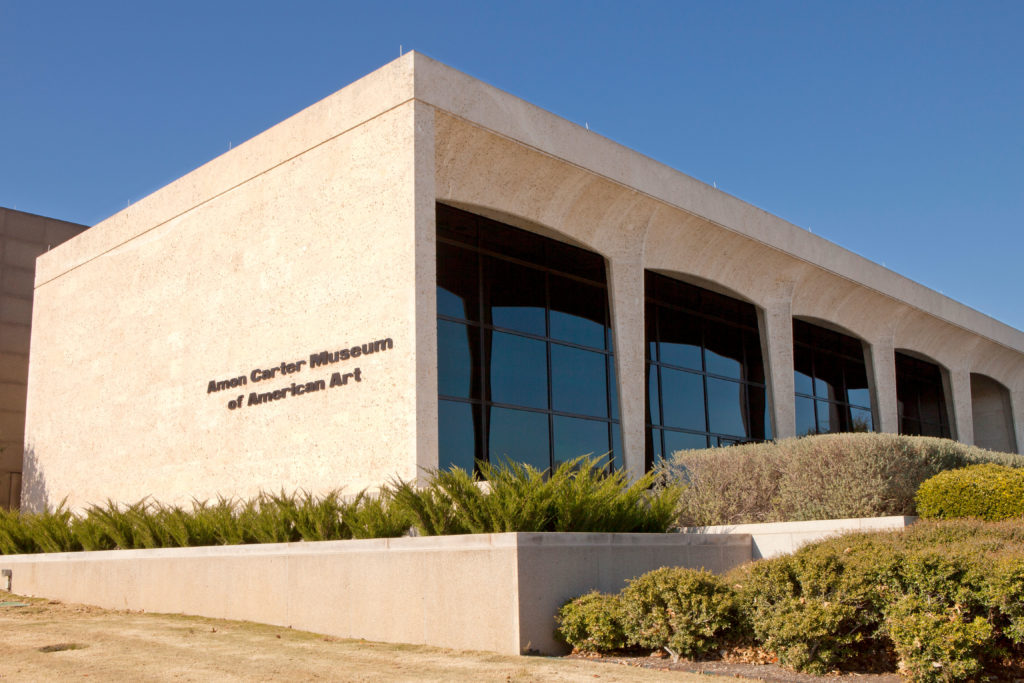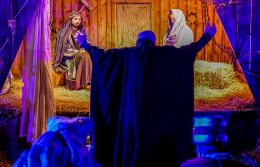Texas Titans: Amon Carter, Mr. Fort Worth
In the early 1900s, Fort Worth was a dusty frontier town overshadowed by its glitzier neighbor, Dallas. While Dallas’ economy boomed with oil money, Fort Worth’s main economic drivers were agricultural; Texas cattle, pigs, and grain were sold and shipped along Fort Worth’s first railroad station. At the turn of the century, 26,668 Texans called Fort Worth home, traversing muddy streets and sidewalks made of wood. It was undoubtedly a place rich with potential but hardly a destination. To become the “small town meets big city” synonymous with Western adventure and Southern hospitality we now know, it needed the help of a highly persuasive businessperson and marketing maverick —and Amon G. Carter was just the Texan for the job.

An Entrepreneur in the Making
Carter mastered the skill of salesmanship at a young age. His mother died when he was merely 13 years old, at which time he began supporting himself through odd jobs. One such odd job was as a “chicken and bread boy” in Bowie, Texas, selling sandwiches for 10 cents to passengers at the train depot. Rumor has it the sandwiches were made of rabbits, which the boys hunted themselves — but who can say?
Regardless, these sandwiches put Bowie on the map and became a part of the town’s culture. Even today, Bowie holds a Chicken & Bread Days Heritage Festival each fall. And they were also Amon’s first success as a young businessman.
But Amon had bigger chickens (rabbits?) to fry. He found a new line of work utilizing his people skills as a traveling salesman for the American Copying Company. Then, in advertising at Barnhart & Swasey in San Francisco.
Amon returned home to Texas and put his expertise in persuasion to use as the advertising manager for the Fort Worth Star newspaper in 1906, making $35/week. The newspaper, however, struggled spectacularly. But Carter was not one to give up. He cut his salary to $20/week and sold peaches from his farm to local grocers to support the newspaper.
This challenging time inspired his most brilliant move: He convinced an investor to buy the only competing local newspaper, the Fort Worth Telegram, and merge the two papers. The resulting Fort Worth Star-Telegram became the most prominent newspaper in the entire Southwest under his leadership, with circulation extending to West Texas, New Mexico, and Oklahoma. He didn’t just save the paper — he made it a sensation.
Over his desk was the motto, “Most anybody can get results when kindly encouraged, but give me the man that can get there in spite of hell.”

Putting Fort Worth on the Map
Carter’s newspaper did more than publish the news. He used it as a vehicle to sell the surrounding areas — and eventually the country at large — on Fort Worth itself. He popularized the phrase “Where the West Begins,” a tagline once featured on the Fort Worth Star-Telegram’s masthead. He used the paper to lobby for business developments and promote cultural events in Fort Worth.
The Fort Worth Star-Telegram was a wildly popular newspaper and the foundation on which he built a communications empire. He bought up WBAP radio and its NBC television affiliate (and Texas’ first TV station), now known as NBC-5 (KXAS)-TV.
Carter owned the airwaves, the press, and the screen. Naturally, he became a celebrity. Throughout the 20s and 30s, Carter became the personification of the quintessential Texan cowboy in American culture: a larger-than-life, story-tellin’, gamblin’, drinkin’ cowboy from the Wild West. His devotion to Fort Worth was legendary — as was his disdain for Dallas. On the rare occasion an obligation took him across the county line, he brought a packed lunch to avoid giving Dallas even a dime of his money. Time and the Saturday Evening Post ran profiles of him. The world couldn’t get enough.
He amplified his star status by inviting celebrities and businesspeople passing through Fort Worth a stay at his Shady Oak Farm, including Charles Lindbergh and Dwight D. Eisenhower. He famously gifted anyone who came to Shady Oak a short-brimmed Stetson hat. And when he traveled, he brought pieces of Forth Worth all over the world, gifting people he met with silver dollars, pecans, hats, and 100-pound watermelons. In 1924, he even traveled to London to give the Prince of Wales a 5X beaver Stetson hat on behalf of Texas.
John Nance Garner, the vice president under Franklin Roosevelt, once complained, “[Carter] wants the whole government of the United States to run for the exclusive benefit of Fort Worth!”

A Legacy that Lives On
While his communications empire was successful, it’s not what made him a millionaire. That, one can credit to his perseverance — and luck — in the oil drilling business. After 90 dry holes, Carter struck oil in New Mexico in 1935. He then applied his riches the same way he’d used his modest and comfortable wages: to drum up economic prosperity and attention for his beloved city. He created the Amon G. Carter Foundation, which, to date, supports schools, health and medicine, and the arts in Fort Worth.
Some of the biggest businesses in the Fort Worth area today were heavily influenced by Carter. In the 1920s, the Fort Worth Star-Telegram lobbied for a “great state college on the plains.” The Texas Technical College in Lubbock was created shortly thereafter, with Carter as the first board chairman. In 1934, American Airlines was created out of several small airline firms. Carter successfully lobbied to move the American Air Transportation offices from Dallas to Fort Worth. (It helped that he became the largest shareholder). He’s credited with playing a significant role in the relocation of Bell Helicopter, the construction of Airforce Plant 4 (now Lockheed Martin Aeronautics) in Fort Worth, and the General Motors assembly plant in Arlington.
Also in 1935, Carter’s good friend Will Rogers, actor/humorist/writer, introduced him to the artworks of Frederic Remington and Charles M. Russell. Their work inspired Carter, which he cherished even more after Rogers’ untimely death in a plane crash that summer. He grew his collection to more than 400 works by the time of his death in 1955. His will laid plans for a nonprofit museum, which later became the Amon Carter Museum of American Art.
In 1936, Carter again put Fort Worth in the international spotlight by building the Fort Worth Casa Mañana (“House of Tomorrow”) in honor of the Texas Centennial. The massive construction included an amphitheater seating 4,000 and a restaurant featuring the world’s largest rotating stage surrounded by a moat that utilized a wall of water to function as the curtain between acts. Broadway performances and Wild West shows ran until World War II, when the building was dismantled and scrapped for the war effort. Casa Mañana was rebuilt in 1958 (sans moat) and runs shows year-round today.
Nearly a million people call Fort Worth home today. Without Amon Carter’s persuasive powers and legendary zeal for the city, perhaps it never would have found its economic and cultural footing and grown past the shadow of Dallas. If Fort Worth is “Where the West Begins,” Carter was perhaps “The Man Who Drew the Line.”
Learn more about the history and culture of Fort Worth.
© 2022 Texas Farm Bureau Insurance



